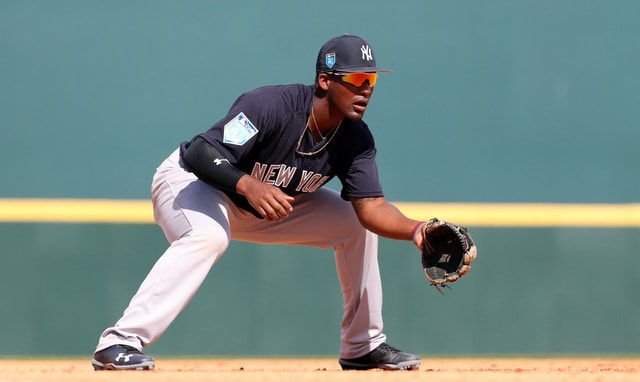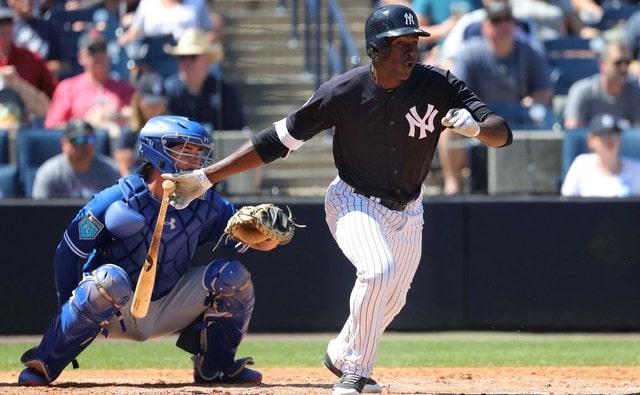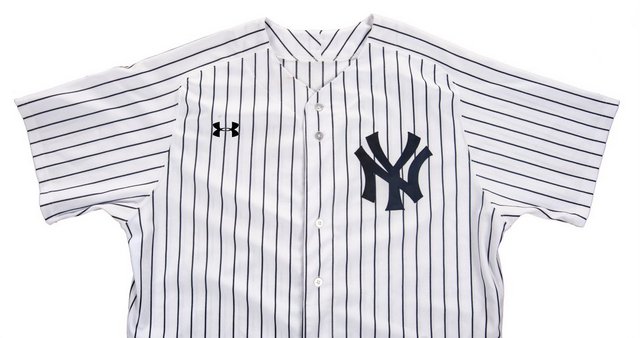The hot stove is running cold right now, so this week we’re running a series of guest posts from Sam Tydings, Steven’s brother. Sam used Out of the Park Baseball to simulate some past “what if” Yankees scenarios. We’ve already looked at the Greg Maddux non-signing, the Albert Belle non-signing, and the Vlad Guerrero non-signing. Now it’s time for the Cliff Lee non-trade. You can follow Sam on Twitter at @simmonsclass.

The morning of July 9th, 2010 was a crucial one in recent Yankees history. At the time, the defending champion Yankees had a 3-game lead in the AL East over the Rays and a 5-game lead over the Red Sox, and the team was in Seattle for their final series before the All-Star Break, scheduled to face M’s ace Cliff Lee that night. The Mariners were tied for the 2nd worst record in the American League, despite trading for Lee in the final year of his deal over the winter to pair with young ace Felix Hernandez in an attempt to make their first playoff run since 2001.
There had been light speculation about where Lee would be moved, but then all hell broke loose on the morning of the 9th. A deal sending top prospect Jesus Montero, along with infielder David Adams and pitcher Zach McAllister to Seattle for Lee was just about done. Until it wasn’t. Whether it was a legitimate concern or a ploy to get Texas to up their offer, the Mariners pulled out of the deal over Adams’ medicals, shipping Lee to the Rangers, who he would lead to the AL pennant before spurning the Yankees again in December to join the Phillies.
So as Yankees OOTP Week (or whatever you end up calling this) continues, let’s take a look at an alternate universe where Lee ends up in pinstripes for the stretch run in 2010. Thank you, Force Trade button:

The fake 2010 Yankees immediately take off with Lee helping to anchor the rotation. Instead of dueling with the Rays for the division title, the Yankees cruised to a 104-58 record, topping their 2009 mark. Meanwhile the Lee-less Rangers clung to the American League West at 82-80. The teams ended up meeting in the fake ALCS, but with Lee on the Yankees, the series is a rout. The Yankees ended up only dropping one playoff game en route to their 2nd straight championship. Lee went 12-1 with just a 1.84 ERA for the team after the trade, leading to his second Cy Young award.
![]()
Fun fact: the 2010 Yankees gave 19 second-half starts to Dustin Moseley, Sergio Mitre, and Ivan Nova.

Congrats, Cliff! We’re all very happy for you!
Perhaps wooed by the ring, Lee stayed in New York with a massive 5-year contract that featured an opt-out after just two years. Fake Lee would go on to lead the Yankees to another pennant before bouncing around the league, finishing just shy of 75% on his final Hall of Fame ballot. It is difficult to see a reality in which a Lee trade does not result in at least the Yankees’ second straight pennant if not another title. Lee was ultimately felled in that 2010 World Series by the likes of Freddy Sanchez, Cody Ross, and Edgar Renteria of course, so anything is possible.
The key component of the Lee trade heading to Seattle was Montero, who was a few months removed from being tied to a Yankees trade for Roy Halladay, and 18 months until he was ultimately flipped to the Pacific Northwest but for Michael Pineda instead of a bona fide ace. Had Lee come to New York and won a title regardless of signing an extension, the trade would have been immediately justified. If he had a similarly awful World Series as the one he pitched in Ranger blue and red and headed to Philadelphia anyway, we would still be ruing the lack of value received for Montero, even if he struggled as he did in Seattle.
Obviously with hindsight being what it is, the Yankees should have dealt Montero in a package for Halladay at the 2009 Winter Meetings if it was truly on the table, instead of refusing to send their top prospect in-division. The 2009-2012 contention window had many fond memories, but it was clear at the time and more so now almost a decade later that the team needed another frontline starter.
There are a myriad of reasons why the Lee trade could have been a disaster for the Yankees: the playoffs are random, he might have ended up hating New York and leaving without delivering a title, maybe Montero thrives with more seasoning in Seattle (ok, probably not that last one). Regardless, if the Yankees weren’t being nakedly used for leverage over the course of a year, they missed their shot to deal their best hitting prospect in a decade from a position of depth for an ace who could have added a couple of more flags to the new stadium’s facade.












